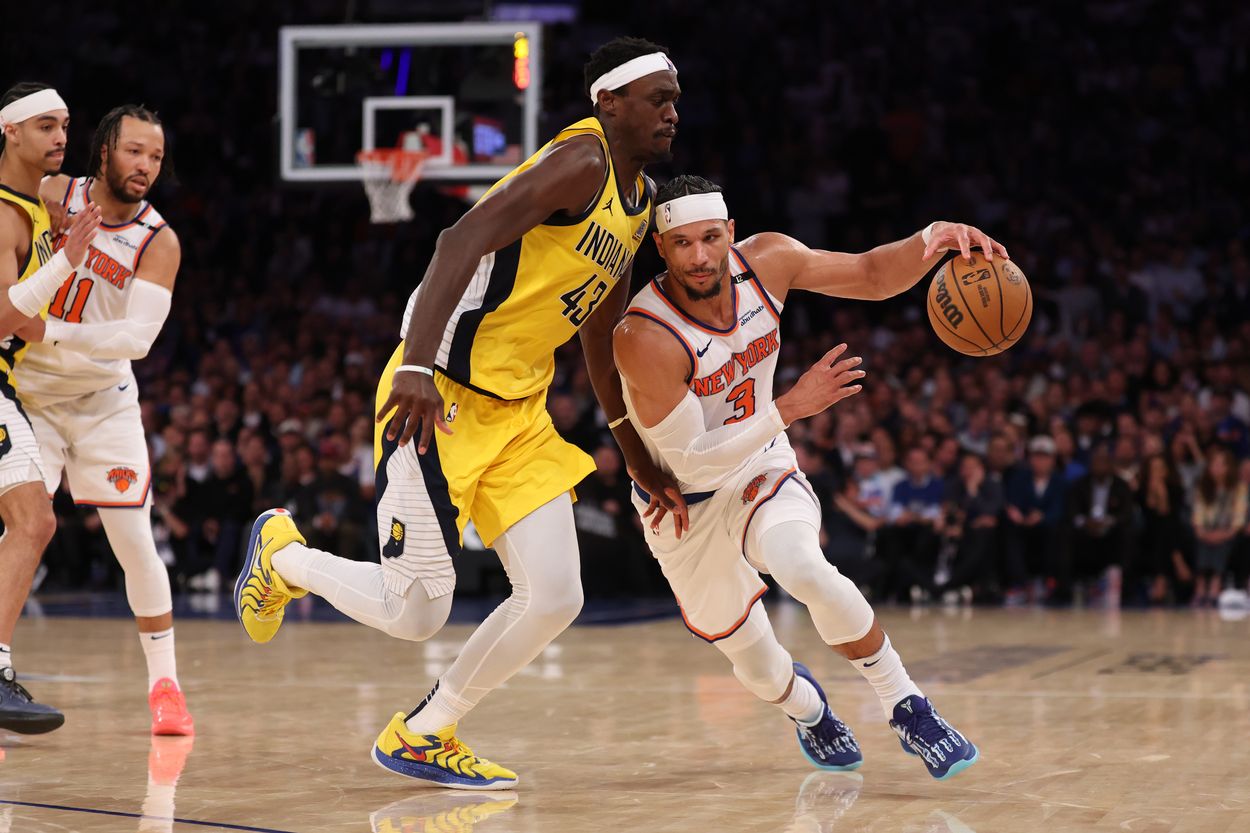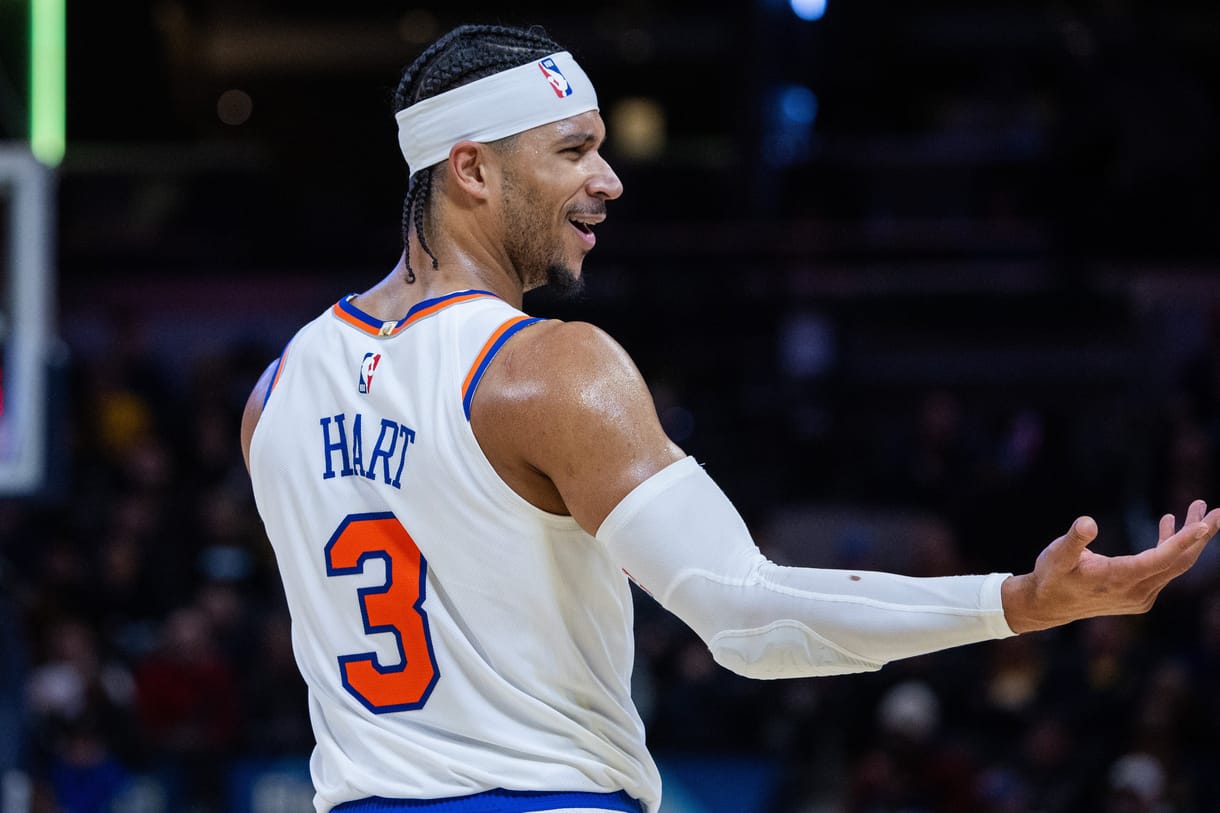
The New York Knicks leaned heavily on Josh Hart last season, but they may have learned an important lesson about fit and deployment.
Hart thrived as a do-it-all sixth man in 2023–24, but when moved into a full-time starting role, some of that spark faded.
He remains one of the Knicks’ most versatile and reliable players, but his impact may be better utilized in a supporting role.
Entering year two of his four-year, $80.9 million deal, the team seems prepared to shift him back into that super-sub role.
It’s not a demotion — it’s a strategic recalibration, one that could help balance the starting five and second unit.

Hart’s 2024 stats don’t tell the full story
Statistically, Hart was solid in 2024, starting all 77 of his appearances while averaging 37.6 minutes per game — a career high.
He posted 13.6 points, 9.6 rebounds, and 5.9 assists per game while shooting 52.5% from the field and 33.3% from deep.
Those are impressive numbers on the surface, but his energy often felt stretched across too many responsibilities.
As a starter, Hart was asked to be a secondary playmaker, a rebounder, and a top defender — often all in one night.
That workload, while admirable, seemed to dilute the high-intensity moments that defined his success in previous years.
The 2023–24 version of Hart was more efficient off the bench
During the 2023–24 season, Hart played 81 games but started only 42 of them — and the results were more focused.
Despite averaging fewer minutes at 33.4 per game, his on-court impact felt more immediate and game-shifting off the bench.
He brought energy in transition, secured tough rebounds, and filled whatever gap needed patching in a given matchup.
There’s something about Hart’s game that thrives on disruption — and coming off the bench gives him that platform more naturally.
The Knicks recognized that difference, and it likely informed their offseason thinking heading into the 2025 campaign.

Bigger frontcourt means more flexibility in Hart’s role
One of the expected lineup shifts this season involves Mitchell Robinson returning to the starting five next to Karl-Anthony Towns.
That combination adds more size, rebounding, and interior defense — things the Knicks lacked when Hart started at the four.
Sliding Hart to the bench also helps preserve his body, especially after carrying such a heavy workload last season.
Robinson’s injury history is a concern, but if he can stay healthy, he fits perfectly next to Towns as a true rim protector.
The trade-off means less small-ball switching, but greater physicality and shot-blocking early in games.
- Knicks could boot veteran guard from the starting 5
- Knicks’ lose ideal point guard to $11 million deal with Lakers
- Knicks 85, Wizards 94: Good news and bad news as Knicks wrap up Summer League
Sixth man Hart gives Knicks a more dynamic bench
Putting Hart back on the second unit makes the Knicks a more versatile team, especially when staggering minutes with Jalen Brunson.
Hart can initiate offense, push the pace, and provide defensive intensity while playing alongside younger or more offensive-minded lineups.
In many ways, he’s the glue that holds the roster together — and glue works best when applied where it’s most needed.
Bringing him off the bench won’t diminish his importance — it might actually elevate it in the long run.
This version of the Knicks may be deeper than ever, and Hart’s value as a connector can’t be overstated in that equation.
!function(){var g=window;g.googletag=g.googletag||{},g.googletag.cmd=g.googletag.cmd||[],g.googletag.cmd.push(function(){g.googletag.pubads().setTargeting(“has-featured-video”,”true”)})}();